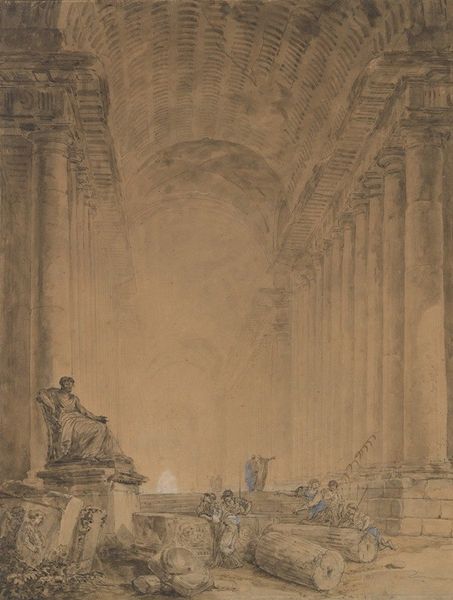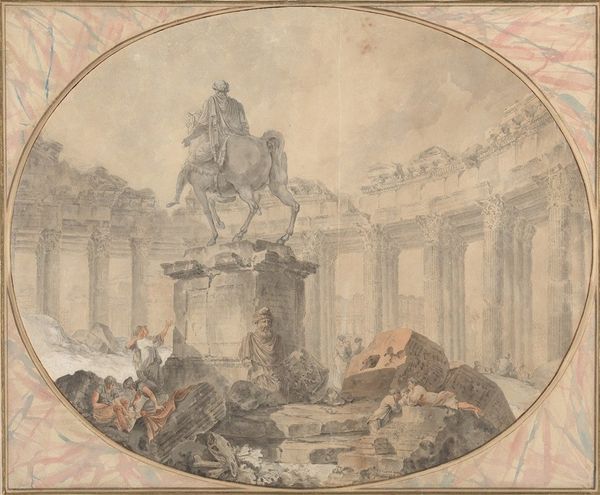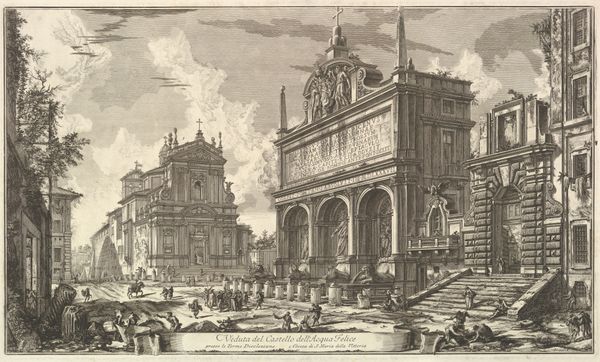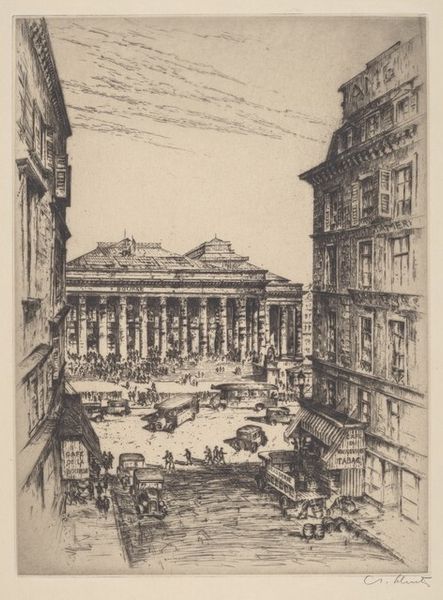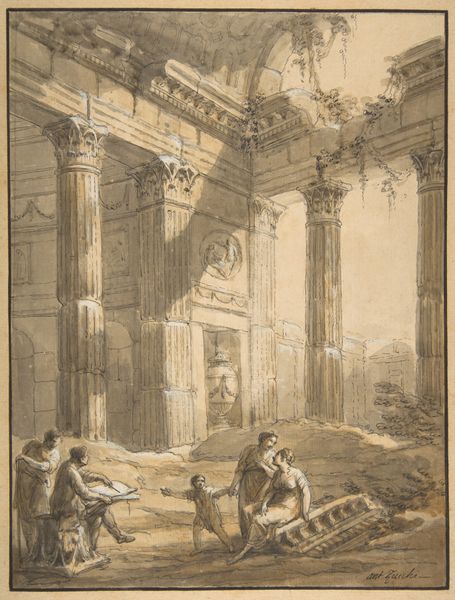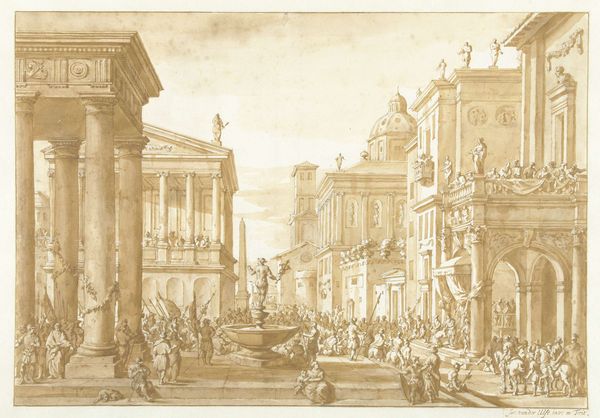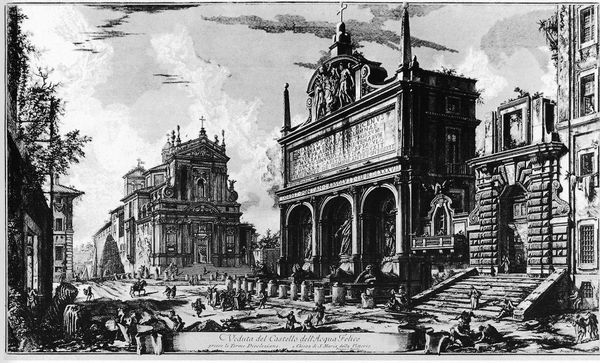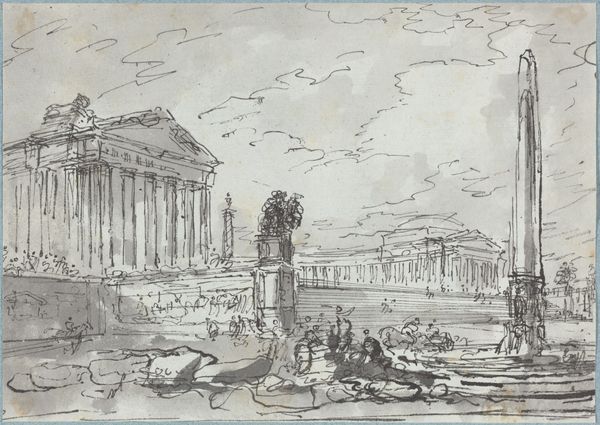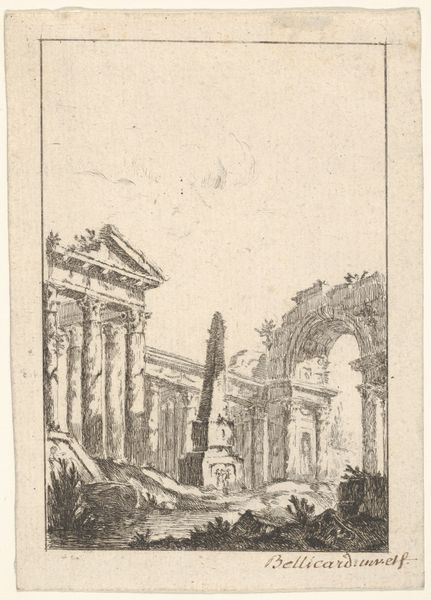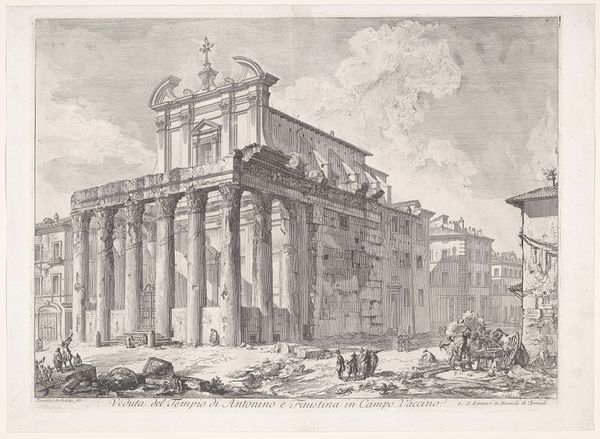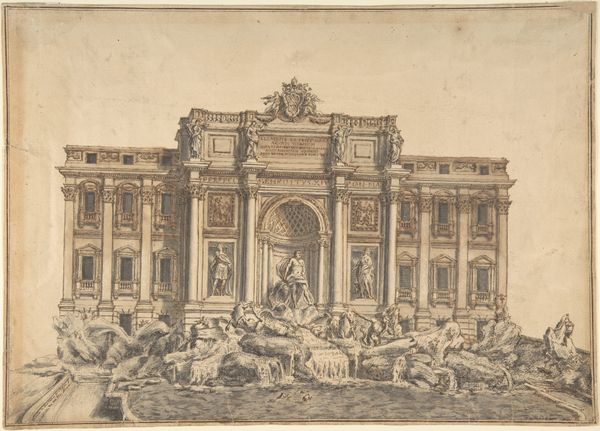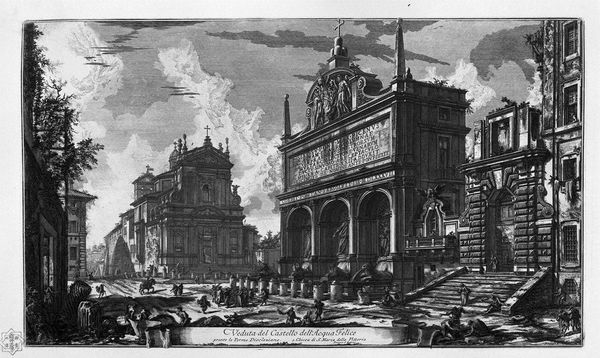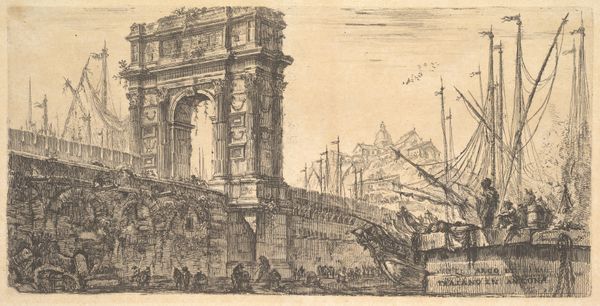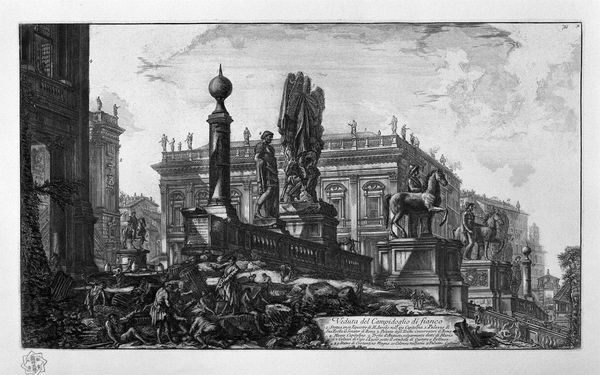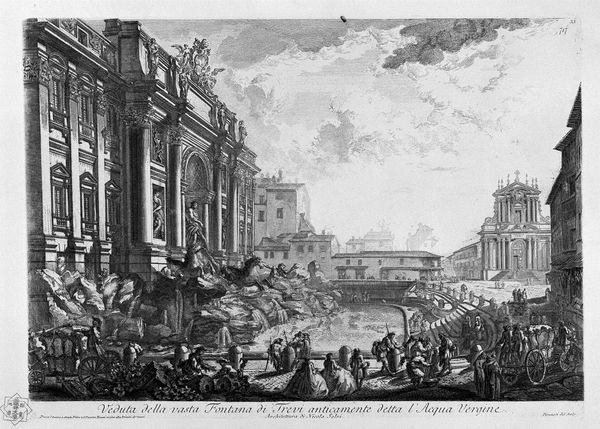
drawing, pencil, charcoal
#
drawing
#
pencil sketch
#
landscape
#
charcoal drawing
#
charcoal art
#
romanticism
#
pencil
#
surrealism
#
cityscape
#
charcoal
#
academic-art
#
pencil art
Copyright: Public domain
Curator: John Ruskin’s drawing, "The Fountains of Trevi," from 1841, captures the monumentality of this iconic landmark in pencil and charcoal. What are your immediate impressions? Editor: The first thing that strikes me is how much it downplays the usual exuberance of the Trevi Fountain. The grey scale lends a somber, almost dreamlike quality. It feels weighty, both physically in its depicted mass, and emotionally. Curator: Absolutely. Ruskin, deeply embedded in Romanticism and later a voice of the Gothic Revival, wasn’t merely depicting a scene, but engaging with ideas of beauty and history. The Trevi Fountain, of course, embodies Rome's powerful relationship with spectacle. He also explored social critique through his art theory. Editor: Considering that context, this drawing takes on new weight. How might the fountain, traditionally a symbol of papal power and baroque excess, have resonated with the burgeoning social critiques of the time? Does this rendering attempt to humanize the iconic landscape or critique social values and excesses represented? Curator: It’s a fascinating tension. Ruskin admired Venice and often analyzed the connection between aesthetics and socio-economic factors. One reading could be that by stripping the fountain of its color and grandeur, he brings forward the sheer labor and artistry involved in its creation—focusing less on who commissioned it and more on its human element, thus empowering the masses in a small but important way. It aligns with his championing of craftsmanship against industrialization's alienating effect. Editor: That's a crucial point. Considering his background, the public function of art would also factor in. For instance, what socio-cultural discourse about access to resources, cultural symbols and imagery, is present with the landscape and those engaging within it. Curator: The shadows, strategically employed, might even hint at the less visible, the unseen hands that built and maintained such splendor. There is definitely something to that—making a visual argument that forces the viewer to ponder on more that just the surface. Editor: Well, considering that and all that we’ve discussed, Ruskin asks that we become mindful of our individual roles, not just in appreciating monuments, but in upholding and, perhaps challenging, the social structures that construct them. Curator: I think you have really pinpointed a potential goal for Ruskin in creating such artwork! Thanks.
Comments
No comments
Be the first to comment and join the conversation on the ultimate creative platform.
